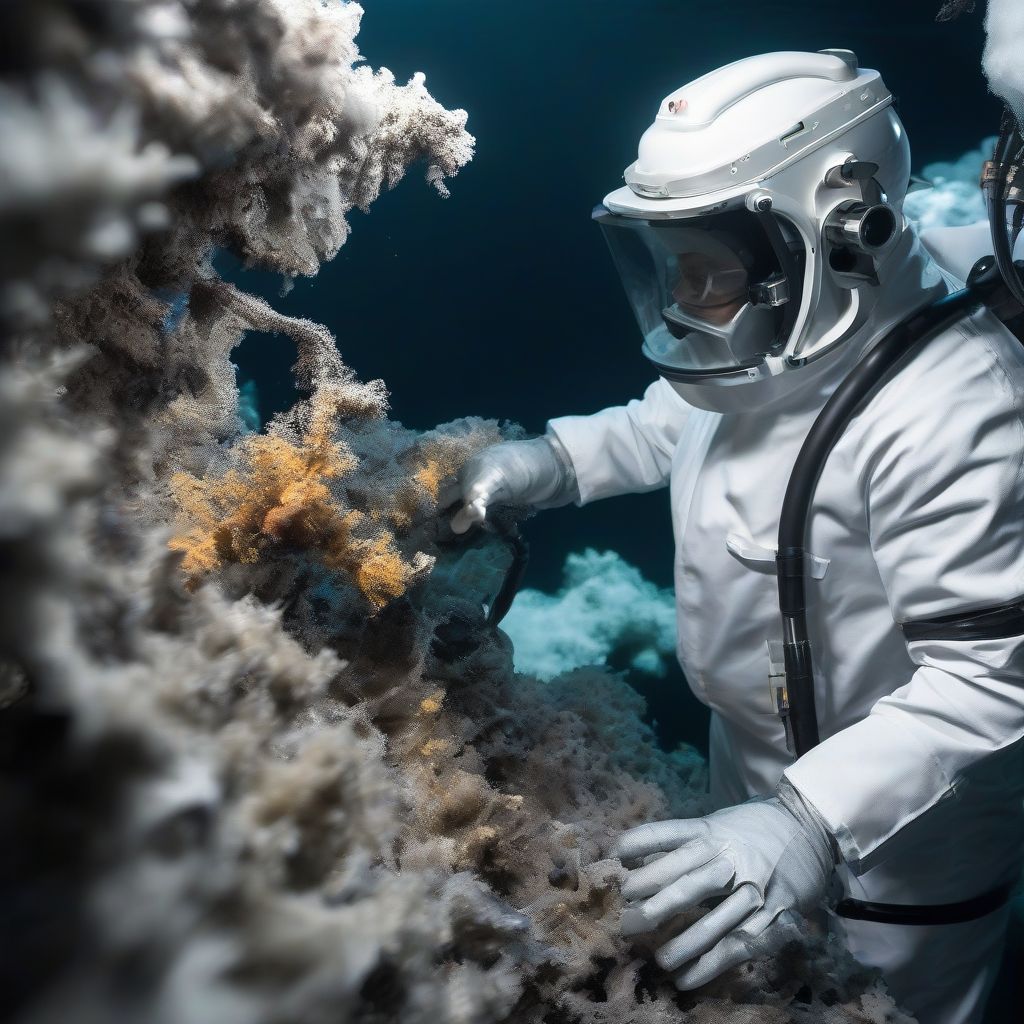Imagine a world teeming with life, not just in the familiar landscapes we know, but also thriving in boiling hot springs, frozen glaciers, and even the crushing depths of the ocean. These seemingly inhospitable environments are home to extremophiles, microorganisms adapted to survive in conditions that would kill most other life forms. But finding these microscopic marvels presents a unique set of challenges. What are the hurdles scientists face in detecting these hardy life forms, and what can their discovery tell us about the potential for life beyond Earth?
The Hunt for the Invisible: Difficulties in Detecting Extremophiles
Finding life in extreme environments is like searching for a needle in a haystack, but the haystack is constantly changing and the needle is microscopic. The very conditions that allow extremophiles to thrive also make them incredibly difficult to detect.
Environmental Obstacles: A Harsh Reality
The extreme conditions themselves present a major hurdle. Sampling in boiling hot springs, acidic pools, or the deep ocean requires specialized equipment and techniques. Just getting to these locations can be a logistical and financial challenge. For example, exploring the deep ocean requires remotely operated vehicles (ROVs) or submersibles, which are expensive and require extensive planning. “Imagine trying to collect a water sample from a hydrothermal vent spewing superheated water,” says Dr. Emily Carter, a fictional astrobiologist specializing in extremophile research. “It’s not just about getting there, it’s about surviving the journey and collecting a viable sample.”
Contamination Concerns: Ensuring a Pristine Sample
One of the biggest challenges is avoiding contamination. Samples can easily be contaminated by microbes from the outside world, making it difficult to determine if the organisms found are truly native to the extreme environment. Strict protocols and specialized equipment are crucial for ensuring sample integrity. Dr. Carter adds, “Even a tiny speck of dust can introduce foreign microbes, skewing our results. It’s like trying to find a single grain of sand on a beach.”
Detection Dilemmas: Finding the Microscopic Needle
Even with a pristine sample, actually detecting the extremophiles can be difficult. Traditional methods of microbial detection, like culturing, often fail because many extremophiles require very specific and unusual growth conditions that are difficult to replicate in a laboratory setting. Furthermore, many extremophiles exist in low densities, making them even harder to find. New molecular techniques, such as DNA sequencing and metagenomics, have revolutionized the field, allowing scientists to identify microbes based on their genetic material, even if they can’t be cultured.
 Challenges of Detecting Extremophiles
Challenges of Detecting Extremophiles
Life on the Edge: Adapting to Extreme Conditions
Extremophiles have evolved remarkable adaptations to survive in their harsh environments. Some thrive in extreme heat, relying on specialized enzymes that can function at high temperatures. Others can withstand extreme cold, using antifreeze proteins to prevent their cells from freezing. Understanding these adaptations is crucial not only for detecting extremophiles but also for understanding the limits of life itself.
The Implications for Astrobiology: A Glimpse Beyond Earth
The study of extremophiles has profound implications for the search for extraterrestrial life. If life can thrive in the extreme environments on Earth, it might also exist in the seemingly inhospitable conditions on other planets or moons. For example, the discovery of extremophiles thriving in the dry valleys of Antarctica, one of the most Mars-like environments on Earth, has fueled hope for finding life on the Red Planet. “By studying extremophiles,” Dr. Carter explains, “we are essentially expanding our understanding of what constitutes a habitable environment. It’s like opening a new chapter in the search for life beyond Earth.”
Pushing the Boundaries: New Techniques for Detection
Scientists are constantly developing new techniques to overcome the challenges of detecting extremophiles. Advanced microscopy techniques, such as fluorescence in situ hybridization (FISH), allow researchers to visualize and identify microbes directly in their natural environment. Metagenomics, which involves sequencing all the DNA in a sample, provides a snapshot of the entire microbial community, even those that cannot be cultured. These cutting-edge techniques are pushing the boundaries of our understanding of extremophile diversity and distribution.
Unlocking the Secrets of Extremophiles: A Journey of Discovery
The quest to understand extremophiles is a journey of discovery, pushing the boundaries of science and technology. From the depths of the ocean to the heights of volcanoes, these remarkable organisms hold clues to the resilience and adaptability of life. Their discovery not only expands our understanding of life on Earth but also fuels our hopes of finding life beyond our planet.
Conclusion: A World of Extremes, A Universe of Possibilities
The challenges of detecting microbial life in extreme environments are significant, but the rewards are immense. From developing new technologies to expanding our understanding of the limits of life, the study of extremophiles is a testament to human ingenuity and our unwavering curiosity about the universe around us. By continuing to push the boundaries of exploration, we can unlock the secrets of these remarkable organisms and perhaps one day answer the fundamental question: Are we alone? We encourage you to share your thoughts on the fascinating world of extremophiles in the comments below. What other challenges do you think scientists face in detecting these hardy life forms? What discoveries do you anticipate in the future? Let’s continue the conversation!



